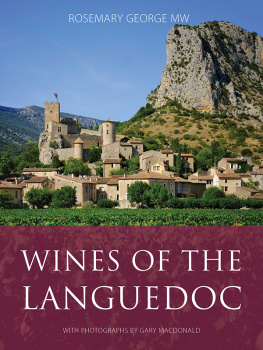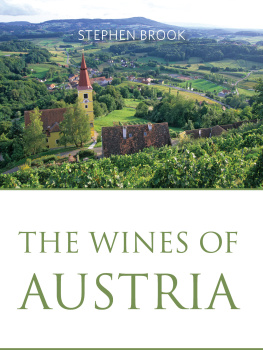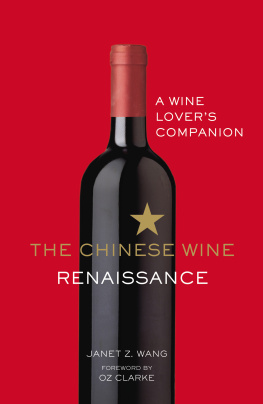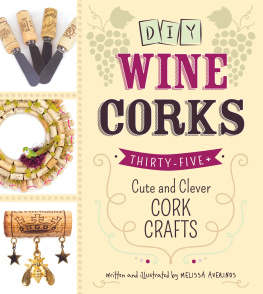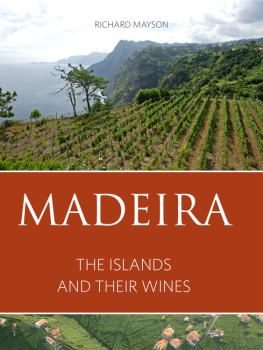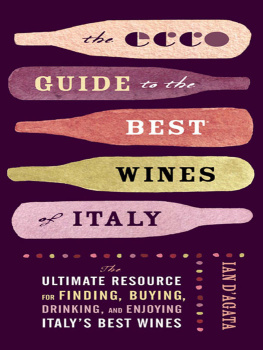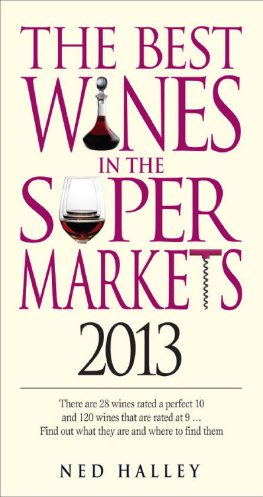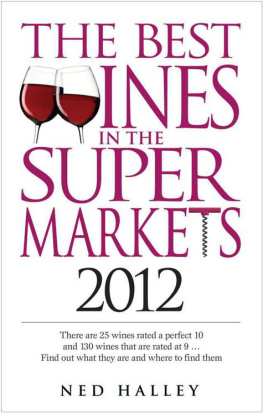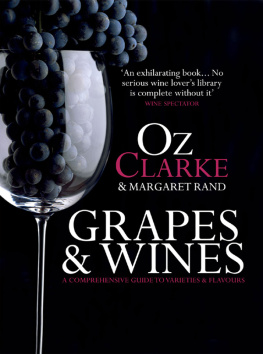ACKNOWLEDGEMENTS
This book would never have happened without the initial help and encouragement of several friends, in no particular order, Alex MacCormick, Wilf Healy, Lits Philippou, Jenny Curra and Monique Dorel. Simon Coulshaw kindly cast an anglophone vignerons eye over my text.
Michle Solans exercised skills of diplomacy and tenacity making appointments with sometimes elusive wine growers; she undoubtedly simplified my life. Gary MacDonald has taken some wonderfully evocative photographs of the Faugres scenery as well as perceptive portraits of some of the vignerons. The old postcard photographs come from Domaine St Martin dAgel, Brigitte Barreiro from Jeanjean helped with other photographs, and Charlotte Habit supplied a photograph from Chteau Laurens. Valerie Desblancs, the director of the Faugres syndicat answered my seemingly endless questions with enormous patience and provided the maps of the area.
But books about wine are above all about the people who make the wine, in this case the fifty or so vignerons and vigneronnes of Faugres, who were happy to open bottles and generously share their wines and talk about their challenges and their achievements. Nor should I forget the nine wine growers of Gabian. Without them all there would be no book.
Thanks are due to Richard Burton for his courage in agreeing to publish a book about one small vineyard in the Languedoc.
And last but certainly not least my husband, Christopher Galleymore, deserves appreciative thanks for living with the trials and tribulations of a gestating book.
APPENDIX I: PRODUCTION FIGURES
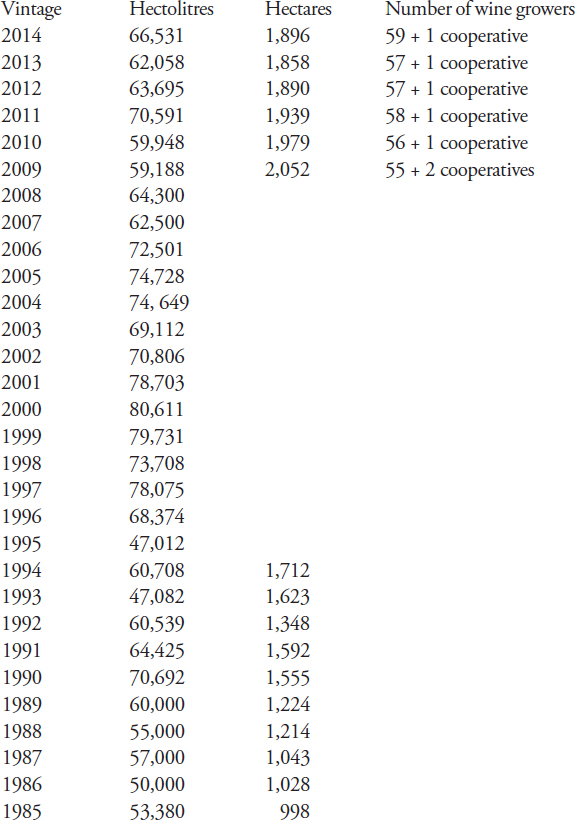
APPENDIX II DATES OF THE BANS DE VENDANGES
| Dates | Picking date at Ollier-Taillefer |
| 2015 27 August | 7 September |
| 2014 28 August | 8 September |
| 2013 29 August | 17 September |
| 2012 30 August | 6 September |
| 2011 26 August | 5 September |
| 2010 3 September | 9 September |
| 2009 3 September | 7 September |
| 2008 15 September |
| 2007 30 August | 10 September |
| 2006 11 September |
| 2005 14 September |
| 2004 17 September |
| 2003 2 September |
| 2002 6 September | 16th September |
| 2001 13 September |
| 2000 21 September |
And then theres a gap until 1982: 16 September
Francoise Olliers grandfather, Marcel Taillefer, made a note of everything. Here are his picking dates back to 1962. I think they are worth noting; as Franoise says, there would have been much more of the later-ripening Carignan in the vineyards then, and the climate was probably a little different so, for historical interest:
1981 25 September
1980 5 October
1979 27 September
1978 7 October
1977 1 October
1976 30 September
1975 3 October
1974 5 October
1973 23 September
1972 4 October
1971 4 October
1970 30 September
1969 6 October
1968 30 September
1967 24 September
1966 17 September
1965 22 September
1964 14 September
1963 25 September
1962 24 September
APPENDIX III: CLIMATIC DATA
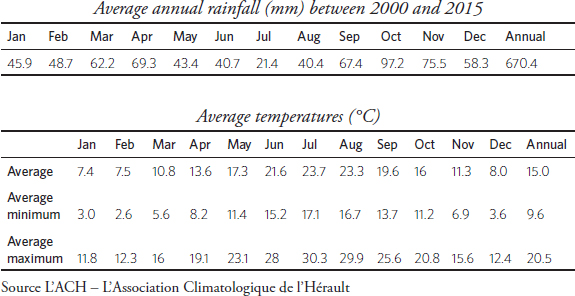
APPENDIX V: AN APPELLATION SUMMARY
If a wine grower has vineyards in the appellation of Faugres, then that is what he or she makes. Until the white appellation of Faugres was created, white wine was labelled Coteaux du Languedoc. As Faugres was recognized as an appellation before the Coteaux du Languedoc, there needs be no mention of the word Languedoc on the label.
Growers in the village of Gabian, outside the appellation, have much more flexibility. Their best wines are likely to be part of the new cru of Pzenas, for which they must conform to strict regulations, particularly relating to grape variety percentages. Otherwise wine from appellation land, and planted with the appropriate grape varieties, will be labelled Coteaux du Languedoc, or Languedoc. The Coteaux du Languedoc appellation is set to disappear in 2017.
If growers have grape varieties that do not conform to the appellation, they may make vin de pays, which are now called IGP or Indication Gographique Protge. They can choose between the broadest category, namely Pays dOc, the departmental delimitation of Pays de lHrault, or the local zone, Cassan. And if they want the barest minimum to do with bureaucracy, they can opt for Vin de France, which has replaced the previous term of vin de table, with differences. They can now include a vintage and a grape variety and, while Vin de France may lie at the bottom of the pyramid of quality, in practice and in the hands of a talented winemaker, it can indicate something worthwhile that simply does not conform to accepted practices.
BIBLIOGRAPHY
Berry, Charles, In Search of Wine, London, 1935, republished 1987
Boissieu, Jean et al., Les Vins du Rhne et de laMediterrane, Editions Montalba, 1978
Bousquet, Jean-Claude, Terroirs viticoles, Paysages et gologie en Languedoc, Editions Ecologistes de lEuzire, 2011
Caumette, Claude, Images de Faugres, ditions Lo Sauta Rcs, Faugres, 2010
Dion, Roger, Histoire de la Vigne et du Vin en France des Origines au XIXme sicle, Flammarion, Paris 1959
Guyot, Jules, Etudes des Vignobles de France, Paris, 1868
Healy, Maurice, Stay Me with Flagons, London, 1949
Jefford, Andrew, The New France, Mitchell Beazley, London 2002
Jullien, Andr, Topographie des Tous les Vignobles Connus, Paris 1866
Lachiver, Marcel, Vins, Vignes et Vignerons: Histoire du vignoble franais, Fayard, Lille, 1988
Pomerol, Charles (ed.), Terroirs et Vins de France, Total-Edition-Presse, Paris 1984
Rendu, Victor, Amplographie Franaise, Paris 1857
Wilson, James, Terroir, Mitchell Beazley, London 1998
Woon, Basil, The Big Little Wines of France, London 1972
THE HISTORY OF FAUGRES
FROM THE GREEKS TO AN APPELLATION
There are various theories about the origin of the name Faugres. Some say that it comes from fougres, which means fern in French, but there are no ferns amongst the vegetation of the garrigues. Claude Caumette, the local historian (of whom more later in the chapter), is firmly of the view that Faugres means fort de htres, a forest of beeches. Again, there are no beeches in Faugres today, but maybe there were in 1000 AD. As will be seen, the name of the wine comes from the reputation of the village for its fine or eau de vie. Although the broad brushstrokes of the viticultural history of the Languedoc have not made much impact on Faugres itself, it is worth considering the development of the region and situating Faugres in that context. However, it is impossible to emphasize sufficiently that Faugres has the history of a poor viticultural region and events often passed it by. Much of the development of the Languedoc focuses on the vineyards of the plains, rather than those of the hills in the hinterland.
THE GREEKS AND THE ROMANS
It all began with the Greeks. First they founded Marsilia, on the site of the modern city of Marseilles in the sixth century BC, and a few years later they settled along the coast around Agde. Excavations at Lattes outside Montpellier have uncovered a vast quantity of grape pips from the fifth century BC, indicating with certainty the presence of vineyards in the Languedoc before the arrival of the Romans, who founded a colony at Narbonne in 118 BC. Viticulture flourished under the Romans. Domitians edict of AD 92 ordering many existing vineyards to be pulled up in an attempt to ensure that land suitable for the cultivation of wheat was retained for that purpose had a temporary braking effect, but only until the repeal of the edict by Emperor Probus in AD 276. Ever since then viticulture has been a vital element of the agricultural activity and economy of the whole region in which Faugres has played its small part.
Next page


